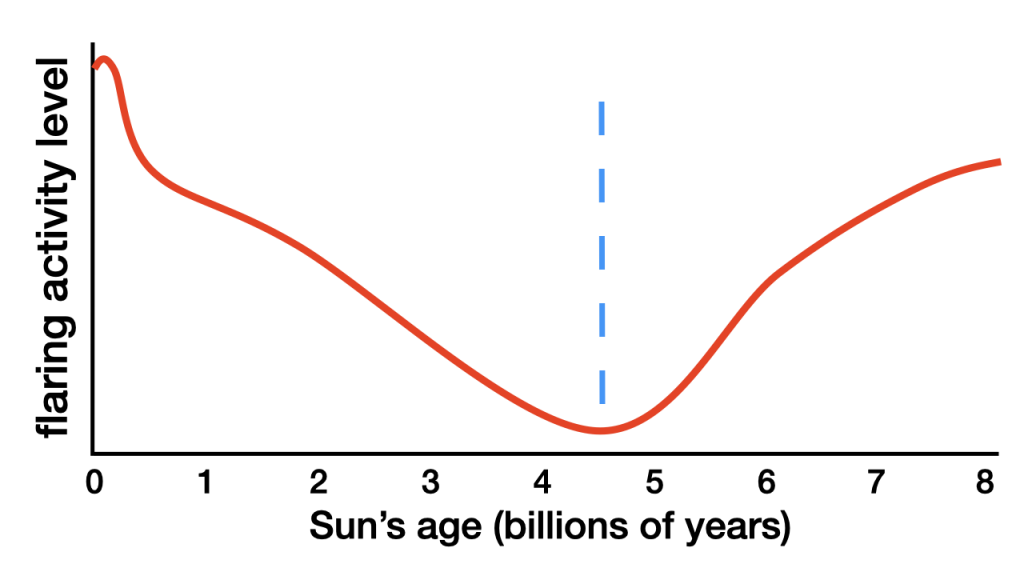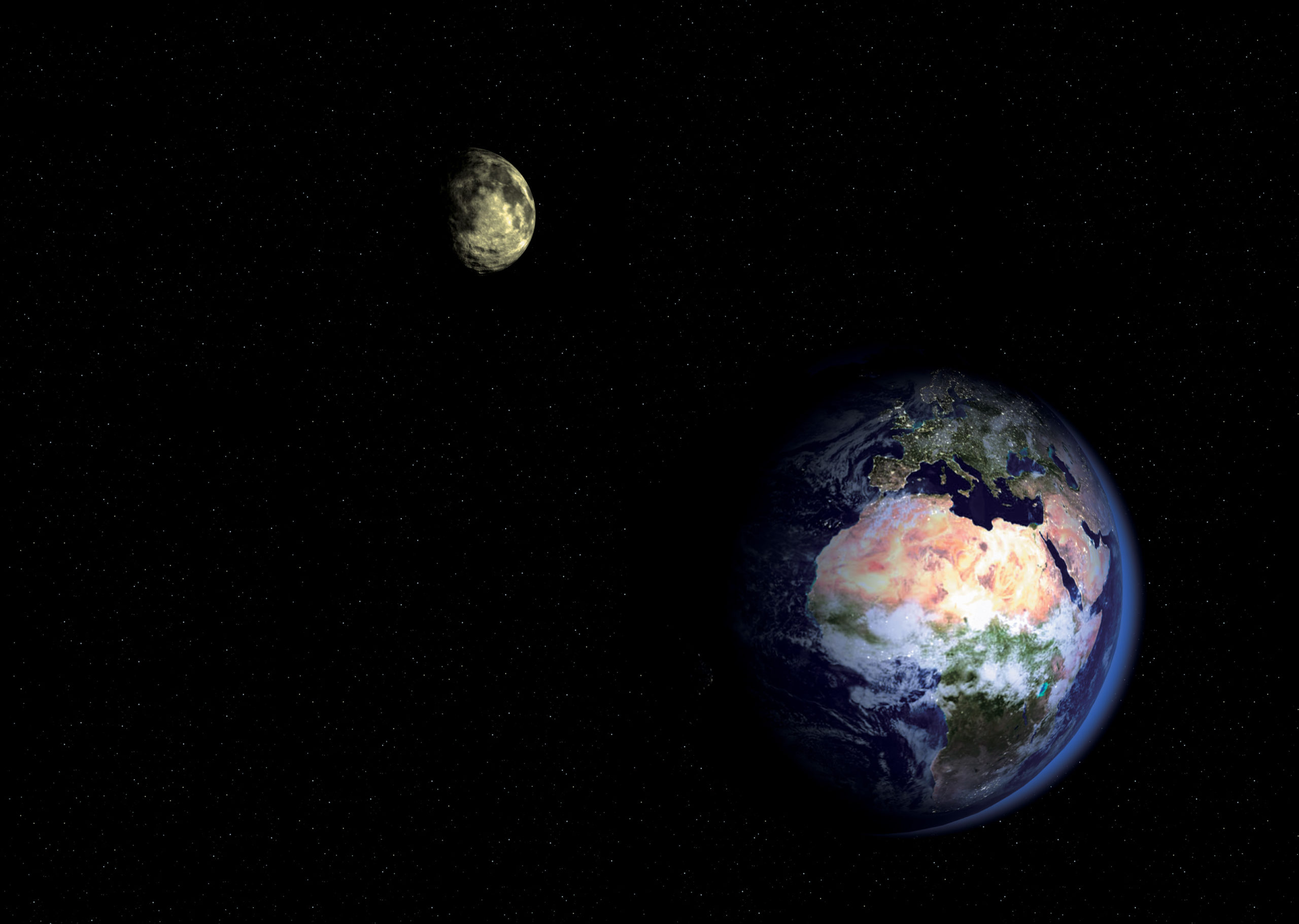Earth-Moon Coupled Magnetosphere Paved the Way for Life
How did an event 4 billion years ago make advanced life possible now?
In November 2020, I wrote about the discovery of the past Earth-Moon coupled magnetosphere. This magnetic connection prior to 4 billion years ago served as a protective barrier against harmful solar radiation on the Earth-Moon system. In my opinion, this finding ranked as the greatest new evidence of the past decade for the fine-tuned design of Earth to make life possible.1 Now, a team of 14 astronomers, physicists, and geologists, led by John Tarduno, has published a paper that provides more details and additional affirmation.2
Dating the Shutdown of the Moon’s Magnetic Field
One important detail not provided in the 2020 paper was an accurate date for the shutdown of the Moon’s magnetic field. The new research filled in the missing pieces.
Scientists have learned that the Moon had a magnetosphere—only for the earliest part of its history—by studying samples from the lunar surface. Tarduno’s team first demonstrated that impact glass recovered by Apollo astronauts from a young impact crater (only 2.01 ± 0.1 million years old) records a strong Earthlike magnetization. Therefore, they established that impacts can impart strong magnetic signals in samples recovered from the Moon and other solar system bodies. Tarduno’s team then analyzed five additional lunar samples recovered by Apollo astronauts with ages measured at 3.94, 3.6, 3.3, 3.3, and 3.17 billion years ago, respectively. In all five samples, they measured negligible magnetic fields consistent with a null lunar magnetic field within the age range 3.94–3.17 billion years ago. Their conclusion was supported by measurements on nine other Apollo samples within the age range 3.89–3.28 billion years ago.3
Tarduno and his colleagues also cited nearly a dozen other measurements on Apollo lunar samples within the date range 3.8–1.0 billion years ago where magnetic fields between 0.1–0.5 gauss (10–50 microtesla) were detected.4 These samples, they concluded, did not manifest the intrinsic lunar magnetic field. Rather, their magnetic fields must have been induced during impact events. Hence, the team determined that the Moon lost its magnetic field 4.0 billion years ago.
Affirmation of Coupled Magnetosphere Discovery
The discovery of the past Earth-Moon coupled magnetosphere was based on two fundamental events in the Moon’s history. The first is that the Moon’s origin arose from a low-velocity collision between two of the Sun’s rocky planets, proto-Earth and Theia. This collision implied that the Moon’s interior initially was sufficiently hot and dense to produce a liquid iron core.
The second fundamental event is that for the first half billion years of its history the Moon was close enough to Earth to experience strong tidal forces as a consequence of Earth exerting a substantially stronger gravitational pull on the Moon’s near side than on its far side. These tidal forces circulated the liquid iron in the Moon’s core. This circulation generated a dynamo, which produced a general lunar magnetic field strong enough to create and sustain a magnetosphere about the Moon.
The date established by Tarduno’s team of 4.0 billion years ago for the shutdown of the Moon’s intrinsic magnetic field is consistent with the discovery published nearly a year ago. Our Moon is one of the most massive moons in the solar system and its unique origin meant that it began with an interior heat hotter than any other solar system moon. Nevertheless, with a mass one eightieth that of Earth the iron in its core could not have remained liquid for more than a billion years and may have ceased to be liquid after just 500–600 million years.
The Moon began its existence orbiting just outside the Roche limit. For the Earth-Moon system, the Roche limit is the minimum separation of the Moon from Earth where the Moon avoids being shattered by tidal forces exerted by Earth. For the Earth-Moon system the Roche limit is 1.5 Earth radii.
From just outside the Roche limit the Moon has been steadily spiraling away from Earth. Presently, the Moon moves farther away from Earth at a rate of 4 centimeters per year.5 Today, the Moon orbits at an average distance of 384,000 kilometers (239,000 miles) away from Earth or 60 Earth radii. Four billion years ago, the Moon was orbiting 114,700 kilometers (71,300 miles) or 18 Earth radii away. That distance is great enough that tidal forces exerted by Earth no longer are strong enough to vigorously circulate liquid iron in the Moon’s core. Therefore, the magnetosphere discovery team anticipated that the Moon’s intrinsic magnetic field would disappear soon after 4 billion years ago. The research of Tarduno and his colleagues established that the Moon’s magnetic field was gone by 3.94 billion years ago and likely experienced rapid decline by 4.0 billion years ago.
Fine-Tuning Implications
Up until 4.0 billion years ago, the Sun’s particle radiation was at an intensity level that would have sputtered away or seriously degraded both Earth’s atmosphere and its hydrosphere. The coupled magnetosphere prevented this outcome. Solar particle radiation also would have wiped out any microbes on Earth’s surface. After 4.0 billion years ago, the Sun’s particle radiation subsided to a level where Earth’s magnetosphere by itself was strong and stable enough to prevent the loss of Earth’s atmosphere or hydrosphere (see figure 1).

Figure 1: Sun’s Particle and X-Ray Radiation and Flaring Activity Levels throughout Its History
The y-axis is logarithmic. The Sun’s particle and x-ray radiation and flaring activity levels were more than 100,000 times greater shortly after its formation than they are now. The Sun’s intensity of particle, x-ray, and gamma-ray emission is strongly correlated with its flaring activity level. The blue dotted line indicates the present time. Credit: Hugh Ross
For a life history any longer than a few centuries or involving organisms larger than microbes, a planet-moon system virtually identical to the Earth-Moon system is needed. Such a planet-moon system must possess both a coupled dynamical history, a coupled magnetosphere history, and a coupled magnetosphere strength virtually identical to what the Earth-Moon system possessed previous to 4.0 billion years ago. Such a planet-moon system must also orbit a star virtually identical to the Sun since stars more massive or less massive than the Sun pose an even greater risk to the planet’s atmosphere, hydrosphere, and life.7
For a planet-moon system to possibly support life-forms larger and more complex than microbes, the fine-tuning required rules out reasonable naturalistic explanations. The only rational explanation of the Earth-Moon system is that it is the product of a superintelligent, supernatural Being who designed and manufactured a home where humans can exist, thrive, and enter into a personal relationship with the cosmic Creator.
Endnotes
- Hugh Ross, “Moon’s Early Magnetic Field Made Human Existence Possible,” Today’s New Reason to Believe (blog), November 16, 2020.
- John A. Tarduno et al., “Absence of a Long-Lived Lunar Paleomagnetosphere,” Science Advances 7, no. 32 (August 4, 2021): id. eab7647, doi:10.1126/sciadv.abi7647.
- C. Cournéde, J. Gattacceca, and P. Rochette, “Magnetic Study of Large Apollo Samples: Possible Evidence for an Ancient Centered Dipolar Field on the Moon,” Earth and Planetary Science Letters 331-332 (May 15, 2012): 31–42, doi:10.1016/j.epsl.2012.03.004; Kristin Lawrence et al., “Lunar Paleointensity Measurements: Implications for Lunar Magnetic Evolution,” Physics of the Earth and Planetary Interiors 168, no. 1–2 (May 2008): 71–87, doi:10.1016/j.pepi.2008.05.007.
- Cournéde, Gattacceca, and Rochette, “Magnetic Study,” 31–42; Lawrence et al., “Lunar Paleointensity Measurements,” 71–87.
- George E. Williams, “Geological Constraints on the Precambrian History of Earth’s Rotation and the Moon’s Orbit,” Reviews of Geophysics 38, no. 1 (February 2000): 37–60, doi:10.1029/1999RG900016.
- V. N. Zharkov, “On the History of the Lunar Orbit,” Solar System Research 34, no. 1 ( January 2000): 1.
- Hugh Ross, Weathering Climate Change (Covina, CA: RTB Press, 2020), 117–26.






